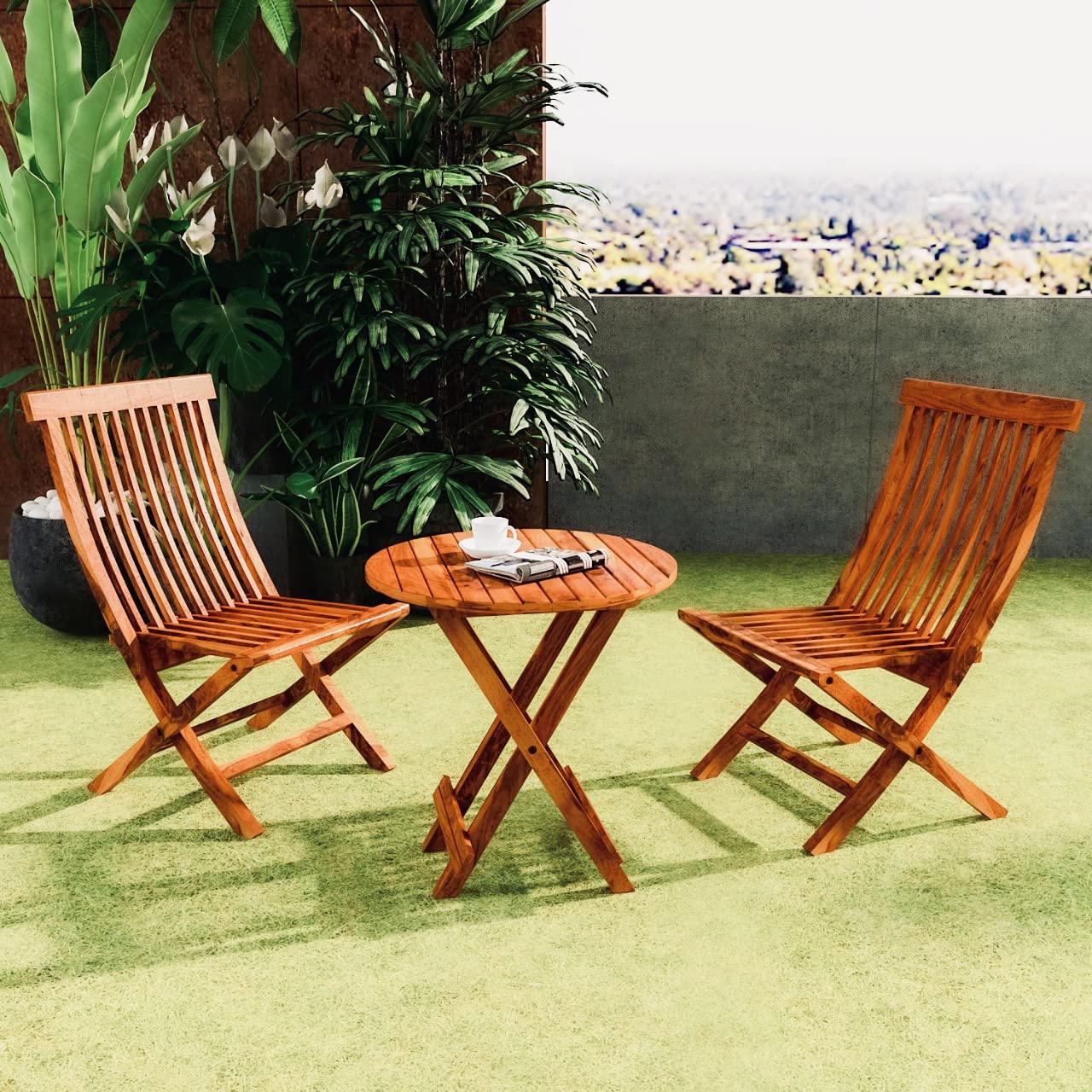

Articles
How To Identify Wood Furniture
Modified: November 1, 2024
Learn how to easily identify different types of wood furniture with our comprehensive guide. Enhance your knowledge of furniture materials and make informed buying decisions.
(Many of the links in this article redirect to a specific reviewed product. Your purchase of these products through affiliate links helps to generate commission for Storables.com, at no extra cost. Learn more)
Introduction
Welcome to the wonderful world of furniture! Furniture plays a crucial role in our lives, adding functionality, comfort, and style to our homes and offices. Whether you’re an interior designer, a homeowner, or simply someone who appreciates well-crafted furnishings, being able to identify different types of wood used in furniture is a valuable skill.
Knowing the type of wood used in furniture not only helps you assess its quality and durability but also allows you to make informed decisions about maintenance, repair, and restoration. Different types of wood have distinct characteristics, colors, and grain patterns, which contribute to the overall beauty and value of a piece.
Identifying wood furniture involves a combination of visual examination, tactile inspection, and knowledge about various wood species. So, let’s delve into the exciting journey of wood identification and learn how to distinguish the different types of wood commonly found in furniture.
In the following sections, we will explore the various visual aspects to look for when identifying wood furniture. We will also discuss the different types of wood commonly used in furniture and delve into their unique characteristics.
Get ready to become a wood detective and unravel the mysteries hidden within the furniture around you!
Key Takeaways:
- Become a Wood Detective
Identifying wood furniture involves examining grain patterns, colors, textures, and weights. This skill allows you to appreciate the unique qualities of different wood species and make informed decisions when selecting furniture. - Embrace the Beauty of Wooden Furniture
Understanding wood identification enhances your overall furniture experience. It enables you to assess quality, value, and durability, and make choices that align with your personal style and aesthetic preferences.
Read more: How To Identify Vintage Wicker Furniture
Importance of Identifying Wood Furniture
Identifying the type of wood used in furniture is essential for several reasons. Knowing the wood species not only helps determine the quality and value of a piece but also provides valuable insights into its maintenance and care requirements.
Here are a few reasons why identifying wood furniture is important:
- Quality assessment: Different wood species have varying levels of durability, strength, and resistance to wear and tear. By identifying the wood used in furniture, you can assess its overall quality and make an informed decision about its longevity. Hardwoods like oak and teak are known for their durability and are commonly used in high-quality furniture.
- Value determination: The type of wood used often determines the value of a piece of furniture. Certain wood species, such as mahogany or walnut, are highly sought after and command higher prices in the market. By identifying the wood, you can determine whether a piece is made of valuable or rare wood, which can influence its resale or appraisal value.
- Maintenance and restoration: Different types of wood require different care and maintenance techniques. Knowing the wood species helps you choose the appropriate cleaning products, oils, or finishes to preserve and protect the furniture. Additionally, when restoring an antique or vintage piece, identifying the original wood can guide you in selecting the right materials and techniques to maintain its authenticity and value.
- Aesthetics and design: Wood species have unique characteristics, such as grain patterns, color variations, and natural markings. Identifying the wood used in furniture allows you to appreciate its visual appeal and understand how it contributes to the overall design and style of the piece. This knowledge can help you make informed decisions when selecting furniture that complements your existing decor.
By being able to identify the wood used in furniture, you become a more informed consumer and have the ability to make choices that align with your preferences, budget, and long-term goals. Whether you’re purchasing new furniture, evaluating a vintage find, or maintaining your existing pieces, understanding wood identification is a valuable skill that enhances your overall furniture experience.
Visual Examination
Visual examination is one of the primary methods for identifying the type of wood used in furniture. By carefully observing certain characteristics, you can gain valuable clues about the wood species.
Here are some visual aspects to consider during your examination:
- Grain pattern: The grain pattern refers to the arrangement and direction of the wood fibers on the surface. Each wood species has a unique grain pattern, ranging from straight and uniform to wavy, curly, or even highly figured. Examine the furniture closely to identify the characteristic grain pattern, which is often a distinctive feature of certain woods.
- Color: Wood comes in a wide array of colors, ranging from light hues to rich, dark tones. Some woods, such as maple and birch, have light, blonde colors, while others, like mahogany and walnut, exhibit deep red or brown shades. Pay close attention to the dominant color of the furniture and any variations or streaks that may be present.
- Texture: The texture of the wood can provide clues about its identity. Some woods have a smooth and even texture, while others have a coarser or more distinct texture due to factors like the size of the wood pores or the presence of irregular growth rings. Run your hand over the surface of the furniture to feel its texture and note any distinguishing features.
- Weight: Although not solely indicative of the wood species, the weight of the furniture can offer some insight. Different types of wood have varying densities and weights. For example, hardwoods like oak and mahogany tend to be heavier than softer woods like pine or birch. Lift the furniture or give it a gentle push to gauge its weight.
- Figure and natural markings: Some wood species exhibit unique figures, such as bird’s eye, tiger stripe, or quilted patterns. These figures appear as irregular or wavy lines and add a distinctive character to the wood. Additionally, natural markings like knots, burls, or spalting can also provide clues about the wood type.
By carefully examining these visual aspects, you can start narrowing down the potential wood species used in the furniture. Keep in mind that visual examination alone may not provide a definitive identification, especially when dealing with similar-looking woods. Therefore, it is important to combine visual examination with other identification techniques for a more accurate assessment.
In the next sections, we will explore the characteristics and properties of different wood species commonly used in furniture. By familiarizing yourself with these woods, you will enhance your ability to recognize them during your visual examination.
Grain Pattern
One of the key visual elements to consider when identifying wood furniture is the grain pattern. The grain pattern refers to the arrangement and direction of the wood fibers on the surface of the furniture. It is formed by the growth rings that occur naturally in the wood as the tree ages.
Here are some common grain patterns and the wood species associated with them:
- Straight grain: Straight grain patterns are characterized by wood fibers that run parallel to each other in a linear fashion. This pattern is commonly found in wood species like maple, cherry, and birch.
- Curly grain: Curly grain patterns feature irregular, undulating lines that appear like waves or curls on the surface of the wood. This pattern gives the wood a visually interesting and dynamic look. Curly grain is often associated with wood species like curly maple and curly cherry.
- Flame grain: Flame grain patterns display a pattern resembling flickering flames. The grain has a sweeping, wavy appearance that adds a sense of movement and depth to the wood. Mahogany and crotch mahogany are known for their flame or tiger stripe grain patterns.
- Quilted grain: Quilted grain patterns have a distinctive three-dimensional appearance, like a quilt or patchwork of patterns. This rare and prized pattern is often found in woods like maple or bubinga, adding a unique visual appeal to the furniture.
- Burl grain: Burl grain patterns are caused by abnormal growths on the tree, resulting in tight, swirling patterns with knots and clusters. Burlwood is highly valued for its unique and marbled appearance and is commonly found in woods like walnut and oak.
Keep in mind that grain patterns can vary within a wood species, and certain species may exhibit multiple patterns. Additionally, factors such as the cutting method, age, and quality of the wood can also affect the visibility and prominence of the grain pattern.
When examining furniture, carefully observe the direction, size, and consistency of the grain pattern. Take note of any distinctive features that resemble the grain patterns mentioned above. This information will help you in narrowing down the possibilities and identifying the wood species used in the furniture.
Next, we will explore the role of color in wood identification and how it can provide further insights into the type of wood used in furniture.
Color
Another important visual aspect to consider when identifying wood furniture is its color. The color of the wood can provide valuable clues about the type of wood species used in the piece.
Wood comes in a wide range of colors, varying from light and pale tones to rich, deep hues. Here are a few examples of wood colors and the associated wood species:
- Light-colored woods: Maple, birch, and beech are commonly known for their light color tones. These woods exhibit light, blonde, or creamy colors, making them versatile options for various styles of furniture.
- Mid-tone woods: Woods like oak and cherry feature mid-tone colors, ranging from warm honey or golden shades to reddish-brown hues. Oak often has a distinctive grain pattern that complements its color, while cherry tends to darken and develop a rich patina over time.
- Dark-colored woods: Mahogany and walnut are renowned for their deep, dark colors. Mahogany can have a rich reddish-brown hue, while walnut often displays a range of shades, from chocolate brown to purplish-black. These woods exude elegance and are prized for their beauty and natural luster.
- Unique-colored woods: Some wood species have unique or unusual colors, setting them apart from the more common options. For example, padauk is known for its vibrant orange or reddish hues, while purpleheart lives up to its name with deep purple tones. These unique colors can make a bold statement in furniture design.
Keep in mind that wood color can be influenced by various factors, including the age of the wood, finishing techniques, exposure to light, and even environmental conditions. For example, over time, certain woods like cherry and mahogany may develop a darker patina as they mature.
When examining wood furniture, take note of the dominant color and any variations or streaks that may be present. Compare the color to the known color ranges of different wood species to help narrow down your identification.
Next, we will explore the role of texture in wood identification and how this aspect can contribute to the overall identification process.
Read more: How To Lighten Wood Furniture
Texture
Texture is an essential visual and tactile aspect to consider when identifying wood furniture. The texture of the wood refers to the feel and surface quality of the material, which can vary from smooth and uniform to rough or distinct.
Here are some common textures you may encounter when examining wood furniture:
- Smooth texture: Some wood species, like maple or beech, have a naturally smooth and even texture. These woods have fine, closely spaced wood pores and exhibit a soft, silky feel when touched. Smooth-textured woods are often chosen for modern or contemporary furniture designs.
- Coarse texture: Certain woods, such as oak or ash, have a coarser texture. These woods have larger wood pores that are visible to the naked eye and may feel slightly rough or grainy when touched. The coarse texture adds character and can be highlighted through appropriate finishing techniques.
- Distinct grain texture: Some woods, like mahogany or walnut, have a distinct grain texture that can be felt as well as seen. The grain lines may be prominent, giving the wood a three-dimensional feel. Run your fingers over the surface of the furniture to detect any raised or recessed grain patterns that may be present.
- Smooth with natural markings: Some wood species, such as birch or cherry, may have a generally smooth texture but exhibit natural markings, such as knots or burls. These natural variations in the wood surface add interest and can be felt as slight irregularities when running your hand across the furniture.
It’s important to note that texture can vary depending on the cut of the wood and the way it has been milled or finished. Additionally, the use of varnishes, oils, or other treatments can also affect the perceived texture of the wood.
When examining wood furniture, pay attention to its texture by running your hand across the surface. Take note of any noticeable smoothness or coarseness and any distinctive grain patterns. The texture, combined with other visual clues, can help in identifying the wood species present in the furniture.
Next, we will explore the role of weight in wood identification and how it can provide additional insights into the type of wood used in furniture.
Weight
Another important aspect to consider when identifying wood furniture is its weight. While not a definitive indicator on its own, the weight of the furniture can provide some insights into the type of wood used.
Here are some general observations regarding the weight of different wood species:
- Hardwoods: Hardwoods, such as oak, maple, and mahogany, tend to be heavier than softwoods. These woods are denser and have a higher weight per cubic foot. If a piece of furniture feels substantial and has a significant weight, it’s more likely to be made of a hardwood.
- Softwoods: Softwoods, like pine or cedar, are generally lighter compared to hardwoods. They have a lower density and weight per cubic foot. If a piece of furniture feels relatively light in comparison, it’s more likely to be made of a softwood.
- Exotic woods: Some exotic woods, like teak or rosewood, have a dense and heavy nature. These woods are sought after for their durability and unique characteristics. If a piece of furniture feels notably heavy, it may be an indication that it’s made of an exotic hardwood.
It’s important to note that weight alone cannot determine the type of wood used in furniture. Many factors can contribute to the weight, including the construction style, additional materials, and even the size of the piece. However, when combined with other identification techniques, weight can provide additional clues to support your assessment.
When examining wood furniture, lift it or give it a gentle push to gauge its weight. Compare the weight to your knowledge of different wood species to make an informed judgment about the type of wood used.
Next, we will explore the characteristics and properties of some common wood species used in furniture, which will further aid in your wood identification journey.
Types of Wood Commonly Used in Furniture
Wood is a versatile and timeless material that is commonly used in furniture construction. Various wood species are chosen based on their unique characteristics, appearance, and durability. Let’s explore some of the most commonly used types of wood in furniture:
- Oak: Oak is a popular hardwood choice known for its strength and durability. It has a distinctive grain pattern with prominent rays, giving it a characteristic appearance. Oak is commonly used in traditional and rustic furniture styles due to its warm, inviting tones and ability to withstand heavy use.
- Maple: Maple is a light-colored hardwood that is highly prized for its durability and smooth texture. It has a straight grain pattern with minimal figure, making it suitable for a wide range of furniture styles. Maple is often used in contemporary and modern designs due to its clean and minimalist look.
- Mahogany: Mahogany is a richly colored hardwood that is renowned for its beauty and elegance. It has a deep reddish-brown hue with a striking grain pattern, often featuring flame or ribbon-like figures. Mahogany is commonly used in high-quality and traditional furniture, adding a touch of luxury and sophistication.
- Walnut: Walnut is a dark-colored hardwood known for its rich and lustrous appearance. It has a range of colors, including deep brown, chocolate, and purplish-black. Walnut often features a straight grain with occasional swirls or burls, giving it a unique character. It is utilized in both traditional and contemporary furniture designs.
- Pine: Pine is a softwood that is widely used in furniture construction. It has a light color with a subtle grain pattern, often exhibiting knots and natural markings. Pine is valued for its affordability and versatility, making it a popular choice for rustic and cottage-style furniture.
- Cherry: Cherry is a hardwood with a warm reddish-brown color that deepens with age and exposure to light. It has a straight grain pattern with occasional waves or curls, adding visual interest. Cherry is favored for its smooth texture and classic appeal, often used in traditional and formal furniture designs.
- Birch: Birch is a light-colored hardwood that is known for its strength and resilience. It has a straight grain pattern with a fine and even texture. Birch is commonly used in contemporary and Scandinavian-inspired furniture designs, providing a clean and minimalist aesthetic.
- Teak: Teak is a dense and durable hardwood known for its natural oils and resistance to decay. It has a golden-brown color and a straight grain pattern. Teak is commonly used in outdoor furniture due to its ability to withstand various weather conditions, but it is also found in indoor furniture, especially in mid-century modern designs.
- Rosewood: Rosewood is a rare and highly prized hardwood known for its rich colors and striking grain patterns. It can range from dark brown to purple with distinctive black streaks. Rosewood is favored for its unique and luxurious appearance, often used in high-end and antique furniture pieces.
These are just a few examples of the many wood species used in furniture. Each wood has its own distinct characteristics, allowing you to select the perfect material to suit your style preferences and functional needs.
Now that we have explored some common wood types, you are equipped with a basic knowledge to identify and appreciate the beauty and craftsmanship of wood furniture.
Let’s conclude our exploration of wood identification and the world of furniture in the next section.
Oak
Oak is a timeless and versatile hardwood that is widely used in furniture construction. It is highly valued for its strength, durability, and distinctive grain patterns. Oak furniture has been enjoyed for centuries and continues to be a popular choice in both traditional and contemporary designs.
Here are some key features of oak wood:
- Grain pattern: Oak has a prominent and unique grain pattern that adds character to furniture. It typically features a straight grain, although some variations like rift-cut or quarter-sawn oak exhibit different patterns. The grain can vary from tight and uniform to more pronounced with cathedrals or rays.
- Color: Oak ranges in color from light to medium brown, with golden or reddish undertones. The color can also be influenced by factors such as the cut of the wood and the finishing technique employed.
- Texture: Oak has a coarse texture with a rugged feel. When touched, you can often feel the raised grain along the surface.
- Durability: Oak is known for its exceptional durability and strength. It is resistant to wear and tear, making it suitable for furniture that undergoes regular use.
Oak is a highly versatile wood that can be used in various furniture pieces, including tables, chairs, cabinets, and bed frames. Its strength and durability make it an excellent choice for furniture that needs to withstand the test of time.
Oak furniture adds a touch of warmth and sophistication to any space. In traditional designs, oak often exhibits more ornate detailing and carvings, showcasing the beauty of the wood grain. In contemporary designs, oak’s clean lines and natural finish create a modern aesthetic.
Maintaining oak furniture is relatively easy. Regular dusting and occasional polishing with a high-quality wood cleaner or polish will help preserve its natural beauty. It’s important to avoid exposing oak furniture to extreme temperature or humidity changes, as this can lead to warping or cracking.
Whether you’re furnishing a classic study, a cozy living room, or a contemporary dining area, oak furniture can provide an enduring and stylish addition to your home. Its timeless appeal and durability ensure that oak furniture will continue to be cherished for generations to come.
Now, armed with your knowledge of oak wood, you can confidently identify and appreciate the beauty and craftsmanship of this remarkable hardwood.
Look for grain patterns and color variations to identify wood furniture. Oak has prominent grain, cherry has a reddish hue, and maple has a light, uniform color.
Read more: How To Disinfect Wood Furniture
Maple
Maple is a versatile and popular hardwood used in furniture construction due to its durability, strength, and beautiful appearance. It is highly regarded for its smooth texture, light color, and ability to take on various finishes. Maple furniture is favored for its timeless appeal and suitability for both traditional and modern designs.
Here are some key features of maple wood:
- Color: Maple wood ranges from a creamy white to a light reddish-brown. Its pale color provides a neutral base that complements a wide range of interior styles and color schemes.
- Grain pattern: Maple has a subtle and straight grain pattern, which gives it a clean and uniform appearance. The lack of pronounced grain patterns makes it an excellent choice for those who prefer a more minimalistic and contemporary look.
- Texture: Maple has a smooth and fine texture, making it ideal for furniture that requires a sleek finish. It has a naturally lustrous surface that can be enhanced with different finishes, from natural to darker stains.
- Durability: Maple is a sturdy and durable hardwood, making it suitable for furniture that needs to withstand daily use. Its density and strength contribute to its reliability, making it a practical choice for high-traffic areas of the home.
Maple furniture is often employed in a variety of designs, such as dining tables, chairs, dressers, and cabinets. Its versatility and clean aesthetic make it a popular choice for both traditional and modern interiors.
One of the advantages of maple furniture is its ability to take on different finishes. Maple can be left with a natural, light finish to highlight its natural color and grain, or it can be stained to achieve a darker tone. Additionally, maple can be painted, providing endless design possibilities to match any decor style.
When it comes to maintenance, maple furniture is relatively easy to care for. Regular dusting and occasional cleaning with a mild wood cleaner will help maintain its beauty. As with any wooden furniture, it’s essential to protect maple furniture from excessive moisture and direct heat sources to prevent any potential warping or splitting.
Maple furniture brings a sense of elegance, simplicity, and timeless beauty to any space. Its light and bright appearance can visually open up a room, making it a great choice for smaller or darker areas.
Now equipped with knowledge about maple wood, you can appreciate and identify the unique qualities of this remarkable hardwood in the furniture around you.
Mahogany
Mahogany is a prized hardwood that is known for its luxurious appearance, durability, and timeless beauty. It has been a popular choice in furniture making for centuries, favored for its rich color, distinctive grain patterns, and remarkable resistance to decay.
Here are some key features of mahogany wood:
- Color: Mahogany is characterized by its deep, reddish-brown color, which develops further with age and exposure to light. It has a warm and inviting tone that adds a touch of elegance to furniture pieces.
- Grain pattern: Mahogany typically exhibits a straight grain pattern, but it can also have interlocking grain patterns, giving it a unique and beautiful appearance. The grain is often highlighted with figure or stripe variations, enhancing the visual appeal of the wood.
- Texture: Mahogany has a smooth and fine texture, making it pleasant to the touch. It has a natural luster that adds to its elegance and sophistication.
- Durability: Mahogany is highly durable and resistant to decay, making it an excellent choice for furniture that needs to withstand long-term use. It is a dense and heavy hardwood, known for its strength and stability.
Mahogany furniture is often associated with traditional or classic designs, as it exudes a sense of luxury and refinement. It is commonly used in fine furniture pieces such as tables, chairs, cabinets, and high-end musical instruments.
One of the alluring characteristics of mahogany is its ability to develop a rich patina over time. As it ages, the color deepens and matures, enhancing the beauty and value of the furniture. Regular polishing and maintenance help preserve its natural sheen and restore any minor imperfections that may occur.
When it comes to caring for mahogany furniture, it is advisable to use a high-quality furniture polish or wax to keep the wood nourished and protected. Avoid placing mahogany furniture in direct sunlight or exposing it to extreme temperature or humidity fluctuations, as this can cause the wood to fade or warp.
With its timeless elegance and durability, mahogany furniture adds a touch of sophistication and luxury to any space. Whether in traditional or contemporary settings, mahogany remains a highly sought-after wood choice for discerning furniture enthusiasts.
Now armed with knowledge about mahogany wood, you can appreciate and identify the exquisite qualities of this remarkable hardwood in the furniture around you.
Walnut
Walnut is a highly esteemed and versatile hardwood used in furniture making for its beauty, strength, and rich colors. It is renowned for its dark, lustrous appearance and distinct grain patterns, making it a popular choice for both traditional and modern furniture designs.
Here are some key features of walnut wood:
- Color: Walnut wood typically ranges from a rich, chocolate brown to a purplish-black color. It often displays a beautiful blend of lighter and darker tones, creating depth and character in furniture. The color can deepen and become more refined with age.
- Grain pattern: Walnut is known for its attractive grain patterns, which can range from straight to slightly wavy. It often features unique swirls, curls, or burls that add visual interest and enhance the wood’s natural beauty. These grain patterns, combined with its dark color, make walnut furniture visually striking.
- Texture: Walnut has a smooth and fine texture, giving furniture a luxurious feel. The wood has a natural sheen that contributes to its overall elegance.
- Durability: Walnut is a durable hardwood, known for its strength and resistance to wear. It is less porous compared to softer woods, making it more resistant to moisture and rotting. Walnut furniture is built to last and can withstand everyday use.
Walnut furniture is versatile, lending itself well to a range of styles and settings. It is often used in various pieces, including tables, cabinets, chairs, and bed frames. Walnut’s rich, dark color can add a sense of warmth and sophistication to any space.
Maintaining walnut furniture is relatively simple. Regular dusting and occasional polishing with a high-quality wood cleaner or oil will help preserve its natural beauty. It’s important to avoid exposing walnut furniture to direct sunlight or extreme temperature and humidity changes, as this can cause fading or warping of the wood.
Walnut furniture has a lasting appeal and can seamlessly blend with different interior design styles. In traditional designs, walnut is often seen in more ornate and intricate details, while in modern and contemporary settings, it offers a sleek and sophisticated touch.
With its timeless elegance, durability, and distinctive grain patterns, walnut furniture adds a touch of luxury and sophistication to any home or office space. Its richness and depth of color make a statement and create an inviting atmosphere.
Now equipped with knowledge about walnut wood, you can appreciate and identify the unique qualities of this remarkable hardwood in the furniture around you.
Pine
Pine is a popular softwood that is widely used in furniture making for its affordability, versatility, and natural charm. It is known for its light color, distinctive grain patterns, and rustic appeal. Pine furniture brings a warm and inviting atmosphere to any space.
Here are some key features of pine wood:
- Color: Pine wood ranges in color from pale yellow to light brown. It has a natural brightness and warmth that can help create a cozy and inviting ambiance in a room.
- Grain pattern: Pine typically has a straight and uniform grain pattern. It may also display some knots, which add character and rustic charm to the wood. The grain can vary from fine to slightly coarse, depending on the type of pine.
- Texture: Pine has a relatively soft and lightweight texture, making it easy to work with. The wood has a subtle natural luster, giving pine furniture a pleasing visual appeal.
- Durability: While pine is not as dense or durable as hardwoods, it still offers reasonable strength and durability for furniture. Proper care and maintenance can help preserve the longevity of pine furniture.
Pine furniture is often associated with a rustic or cottage-style aesthetic, but it can also be adapted to other design styles. The light color and natural grain patterns of pine make it a versatile choice that harmonizes well with various decor themes.
One of the advantages of pine furniture is its relative affordability compared to hardwood options. Pine is widely available, making it a cost-effective choice for those on a budget. Its versatility also allows for a wide range of furniture designs, from simple and functional pieces to more intricate and decorative ones.
Maintaining pine furniture is relatively easy. Regular dusting and occasional cleaning with a mild wood cleaner will help keep the surface clean and remove any build-up. It’s important to protect pine furniture from excessive moisture and avoid placing hot or wet objects directly on the surface to prevent damage or warping.
Pine furniture exudes a warm, inviting, and relaxed charm that can create a cozy and comfortable atmosphere in your home. Whether you’re furnishing a bedroom, a living room, or a dining area, pine furniture offers a natural and timeless beauty that can complement a variety of interior styles.
Now armed with knowledge about pine wood, you can appreciate and identify the distinctive qualities of this versatile material in the furniture around you.
Read more: How To Restain Wood Furniture
Cherry
Cherry is a beautiful and highly esteemed hardwood used in furniture making for its rich color, smooth texture, and elegant appearance. It is cherished for its warmth, timeless charm, and ability to develop a rich patina over time. Cherry furniture adds a touch of sophistication and refinement to any space.
Here are some key features of cherry wood:
- Color: Cherry wood starts with a light, reddish-brown color when freshly cut. Over time, it naturally darkens and develops a rich, deep reddish-brown hue with a hint of golden highlights. The aging process enhances the wood’s beauty and increases its visual appeal.
- Grain pattern: Cherry typically exhibits a straight grain pattern, but it can also have occasional curly or wavy variations, adding character and visual interest to the wood. The grain is often enhanced by figure or stripe patterns, highlighting the wood’s natural beauty.
- Texture: Cherry has a smooth and satiny texture that feels pleasing to the touch. It has a natural luster that contributes to its overall elegance and sophistication.
- Durability: While cherry is not as hard as some other hardwoods, it is still a durable wood that can withstand the test of time. It is less prone to warping or splitting, making it suitable for furniture that will be used and enjoyed for many years.
Cherry furniture is often associated with classic and traditional designs, but it can also lend itself beautifully to contemporary or transitional styles. It is commonly used in pieces such as tables, chairs, cabinets, and bedroom furniture.
One of the distinctive characteristics of cherry wood is its ability to develop a rich patina as it ages. Exposure to light further enhances the wood’s color, deepening the reddish tones and adding depth and character to the furniture. Regular polishing and proper care can help maintain the wood’s natural beauty and ensure its longevity.
Caring for cherry furniture involves regular dusting and occasional polishing with a high-quality wood cleaner or oil. It’s important to protect cherry furniture from direct sunlight and excessive heat or humidity changes, as these can affect the wood’s color and cause it to fade prematurely.
Cherry furniture brings an air of elegance and timelessness to any room. Its warm and inviting hue creates a cozy and intimate ambiance, making it a favored choice for bedrooms, dining rooms, and formal living spaces.
Now equipped with knowledge about cherry wood, you can appreciate and identify the exquisite qualities of this remarkable hardwood in the furniture around you.
Birch
Birch is a versatile and visually appealing hardwood commonly used in furniture making. Known for its light color, smooth texture, and fine grain, birch wood offers a clean and elegant aesthetic that can complement a variety of interior styles. Birch furniture combines functionality with a touch of natural beauty.
Here are some key features of birch wood:
- Color: Birch is typically light in color, ranging from creamy white to light yellow or brown. Its pale hue provides a neutral base that can brighten up a room and create a sense of openness.
- Grain pattern: Birch has a straight and even grain pattern that adds to its clean and uniform appearance. While the grain is not as pronounced as in some other woods, it still offers a subtle visual texture that enhances the overall look of the furniture.
- Texture: Birch has a smooth and fine texture, giving furniture a sleek and polished feel. Its surface is pleasant to the touch and showcases the wood’s natural luster.
- Durability: Birch is a durable wood choice, although it is not as hard as some other hardwoods. It is known for its strength and resistance to wear and tear, making it suitable for furniture that needs to withstand regular use.
The versatile nature of birch wood allows it to be used in a variety of furniture pieces, from bedroom sets and dining tables to cabinets and chairs. Its light color and clean aesthetic make it especially popular in contemporary and Scandinavian-inspired designs.
Maintaining birch furniture is relatively straightforward. Regular dusting and occasional cleaning with a mild wood cleaner will help keep the surface looking its best. As with any wooden furniture, it’s important to protect birch from excessive moisture and avoid placing hot or wet objects directly on the surface to prevent damage.
Birch furniture can create a fresh and modern ambiance in any room. Its light and unassuming color make it a great choice for smaller or darker spaces as it helps to create a sense of lightness and airiness. Birch can be left in its natural state or stained to achieve a darker tone, providing versatility in design possibilities.
With its timeless elegance, durability, and clean aesthetic, birch furniture offers a beautiful and practical addition to any home or office space. Its simplicity and versatility make it a popular choice for those seeking a balance of style and functionality.
Now equipped with knowledge about birch wood, you can appreciate and identify the distinguished qualities of this remarkable hardwood in the furniture around you.
Teak
Teak is a highly regarded hardwood known for its strength, durability, and exceptional beauty. Its natural oils, high density, and resistance to rot and decay make it a popular choice for both indoor and outdoor furniture. Teak furniture offers a timeless elegance and a touch of sophistication to any space.
Here are some key features of teak wood:
- Color: Teak starts with a honey or golden color when freshly cut, which matures to a rich, warm brown over time when exposed to sunlight and air. The rich patina is highly prized and adds to the wood’s appeal.
- Grain pattern: Teak typically possesses a straight grain pattern, but it can also exhibit a wavy or interlocking grain. The grain is often wavy or figured, creating a visually appealing and distinctive look.
- Texture: Teak has a coarse texture with a natural oily feel, giving it a smooth and polished surface. The wood’s natural oils contribute to its durability and enhance its resistance to water and moisture.
- Durability: Teak is renowned for its exceptional durability and resistance to pests, rot, and decay. It is a dense hardwood that can withstand various weather conditions, making it an ideal choice for outdoor furniture.
Teak furniture is not only valued for its strength but also for its timeless beauty. It is often used in a range of furniture pieces, including outdoor tables, chairs, benches, as well as indoor furniture such as cabinets and flooring.
One of the unique characteristics of teak is its ability to retain its beauty with minimal maintenance. Its natural oils allow it to resist warping, cracking, and decay, making it a low-maintenance option. Regular cleaning with a mild soapy solution and periodic application of teak oil can help maintain its natural luster and prevent the wood’s color from fading.
Teak furniture effortlessly combines elegance and functionality. Its warm and inviting color, coupled with its durability, makes it a favorite choice for outdoor spaces. Additionally, teak’s rich brown hue and straight grain lend a touch of luxury to indoor furniture, making it a versatile and highly sought-after material.
Whether in traditional or contemporary designs, teak furniture exudes a sense of sophistication and style. Its natural beauty and ability to withstand the test of time make it an excellent investment for those seeking quality and long-lasting furniture.
Now equipped with knowledge about teak wood, you can appreciate and identify the exceptional qualities of this remarkable hardwood in the furniture around you.
Rosewood
Rosewood is a highly prized hardwood known for its exceptional beauty, rich colors, and unique grain patterns. It is a luxurious and exotic wood that has been highly valued for centuries. Rosewood furniture stands out with its elegance, sophistication, and the touch of luxury it brings to any space.
Here are some key features of rosewood:
- Color: Rosewood encompasses a wide range of colors, from golden browns to dark purples with striking black streaks. The color variations create a mesmerizing and vibrant appearance that is highly captivating.
- Grain pattern: Rosewood often presents a visually stunning grain pattern with intricate swirls, waves, or irregular lines. The grain can be straight, but it can also exhibit unique figures like burls or curls, making each piece of rosewood furniture truly unique.
- Texture: Rosewood has a smooth and fine texture that lends a luxurious feel to furniture. Its natural polish and luster further add to its allure.
- Durability: Rosewood is a dense and durable hardwood that is known for its longevity and resistance to decay. It is a strong wood that can withstand daily use, making it well-suited for furniture that needs to endure for generations.
Rosewood furniture is often associated with high-end and antique pieces, as it exudes a sense of opulence and elegance. It is commonly used in fine furniture, cabinets, musical instruments, and decorative items.
Maintaining rosewood furniture is relatively straightforward. Regular dusting and occasional cleaning with a soft, damp cloth will help preserve its beauty. Applying a high-quality wood oil or wax can enhance its natural luster and provide added protection. Avoid exposing rosewood furniture to direct sunlight or extreme humidity changes to prevent any unnecessary fading or warping.
Rosewood furniture has a timeless aesthetic that works well with a variety of interior styles. It can serve as a statement piece, instantly elevating the visual appeal of a room. Rosewood’s rich colors and distinctive grains make it an eye-catching focal point, whether in traditional, mid-century modern, or contemporary designs.
With its luxurious appearance and exceptional craftsmanship, rosewood furniture adds a touch of elegance and sophistication to any space. Its unique patterns and warm hues create an aura of refinement and luxury that is unparalleled.
Now armed with knowledge about rosewood, you can appreciate and identify the exquisite qualities of this remarkable hardwood in the furniture around you.
Read more: How To Stain Wood Furniture
Conclusion
Congratulations! You have delved into the fascinating world of wood identification in furniture. By understanding the visual aspects and characteristics of different wood species, you can now confidently recognize and appreciate the beauty and craftsmanship of wooden furniture.
Identifying wood furniture is important for a variety of reasons. It allows you to assess the quality, value, and durability of a piece. Knowing the wood type helps you make informed decisions about maintenance, care, and restoration. Additionally, recognizing different wood species enables you to select furniture that aligns with your personal style and aesthetic preferences.
Throughout this journey, we explored the visual examination of furniture, including the grain pattern, color, texture, and weight of wood. We also delved into the characteristics of some commonly used wood species, such as oak, maple, mahogany, walnut, pine, birch, teak, and rosewood.
Each wood species has its own unique qualities, ranging from the strong and durable nature of oak to the elegant and luxurious appeal of mahogany. Maple offers a smooth texture and versatility, while walnut boasts a rich color and striking grain patterns. Pine brings a rustic charm and affordability, while birch offers a clean aesthetic and light color. Teak is prized for its durability and natural oils, and rosewood exudes opulence and distinct grain patterns.
By combining your newfound knowledge of wood identification with your personal taste and style preferences, you can make informed decisions when selecting and appreciating wooden furniture.
Remember, proper maintenance and care are essential to preserve the beauty and longevity of wooden furniture. Regular dusting, cleaning with suitable products, and protecting from extreme conditions will help ensure that your cherished pieces remain in excellent condition for years to come.
So, the next time you come across a piece of furniture, take a closer look, observe the grain pattern, feel the texture, and appreciate the unique characteristics that wood brings. Embrace the beauty, craftsmanship, and enduring appeal of wooden furniture in your everyday life.
Enjoy your wood identification journey and may your furniture bring you joy and comfort for many years ahead!
Frequently Asked Questions about How To Identify Wood Furniture
Was this page helpful?
At Storables.com, we guarantee accurate and reliable information. Our content, validated by Expert Board Contributors, is crafted following stringent Editorial Policies. We're committed to providing you with well-researched, expert-backed insights for all your informational needs.
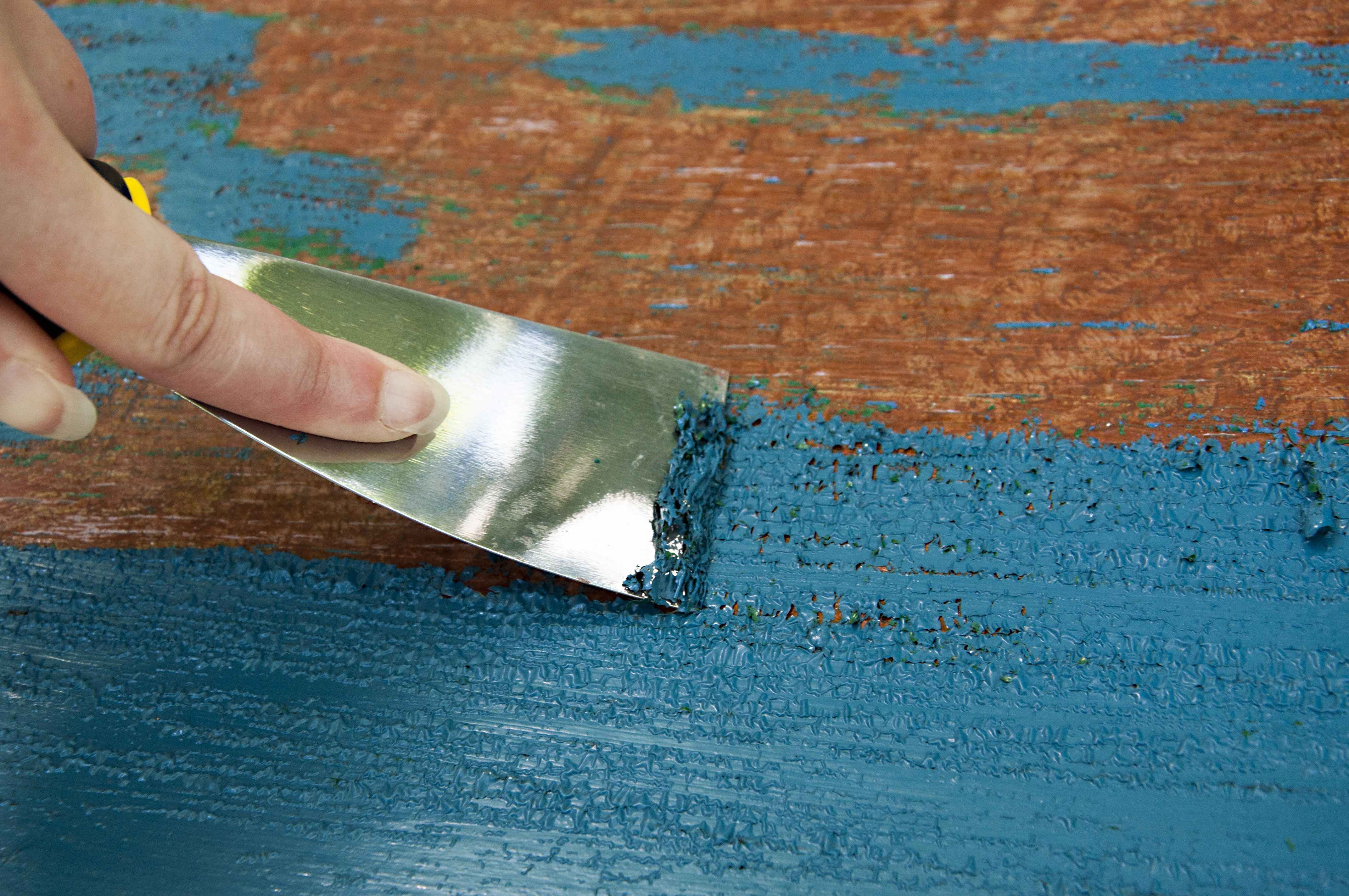
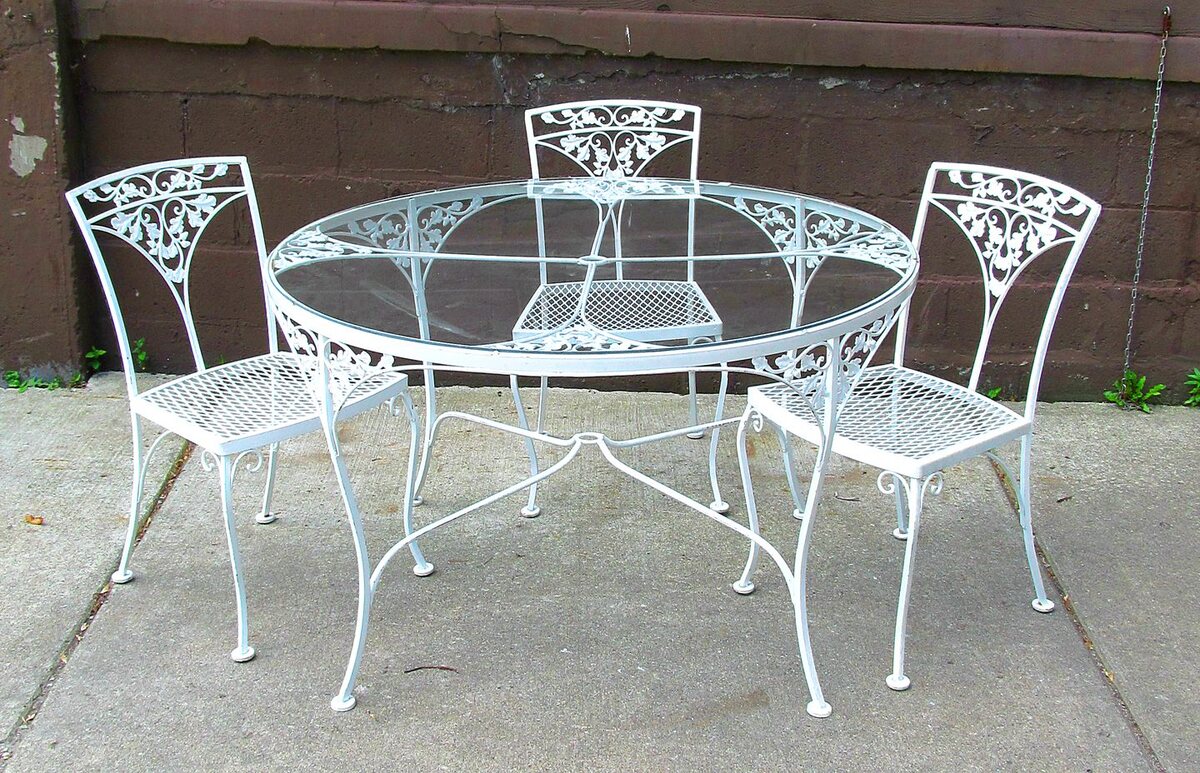

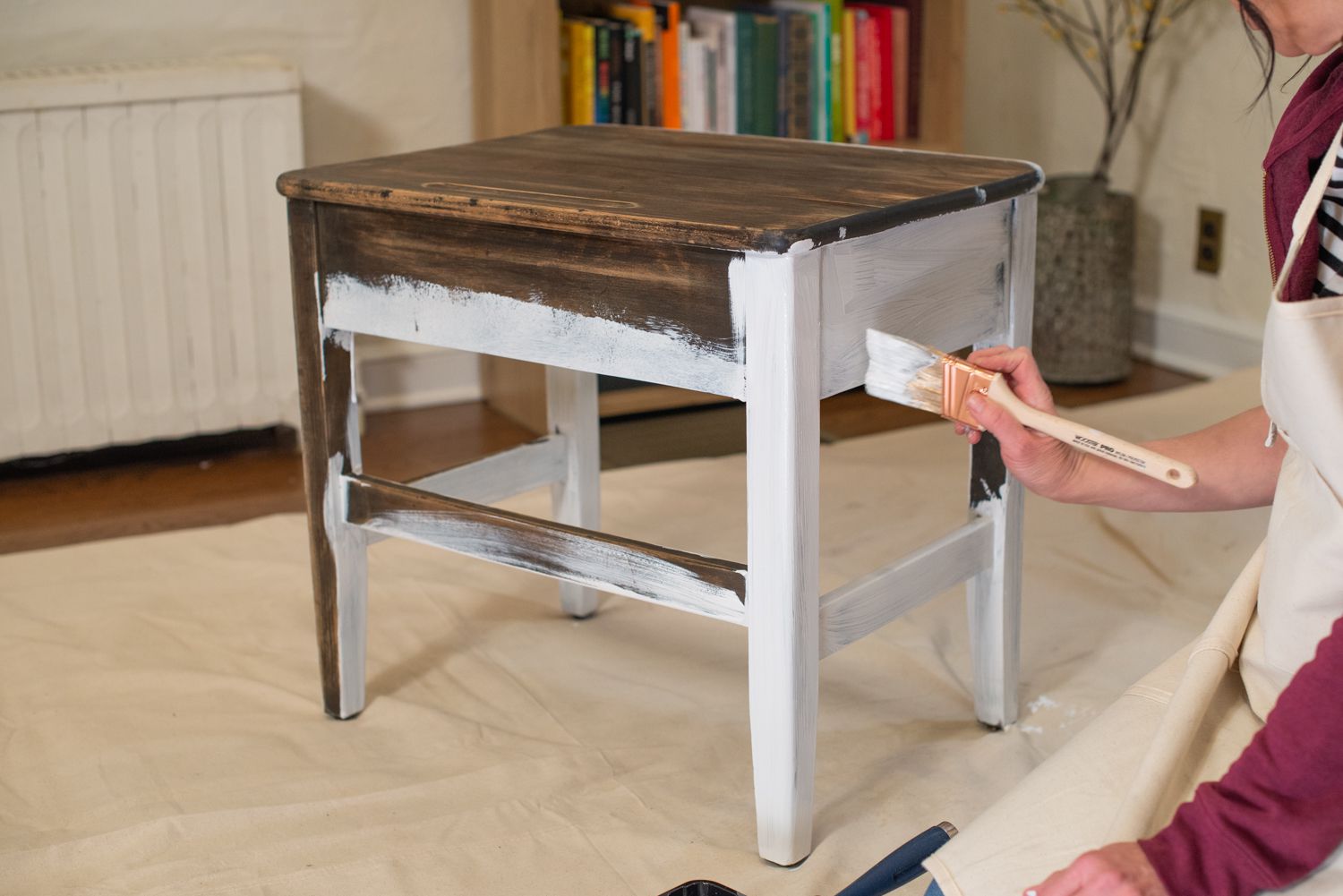
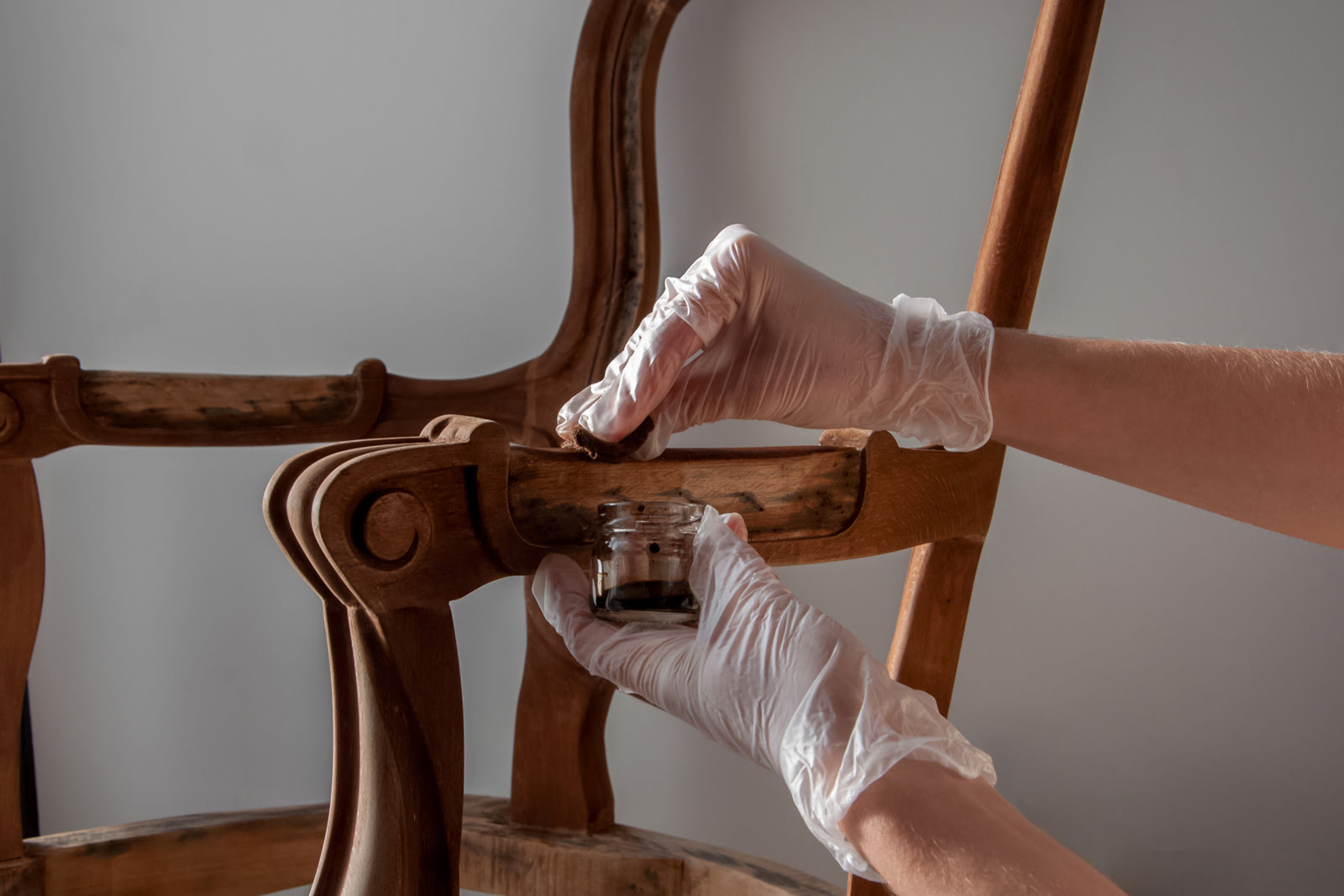
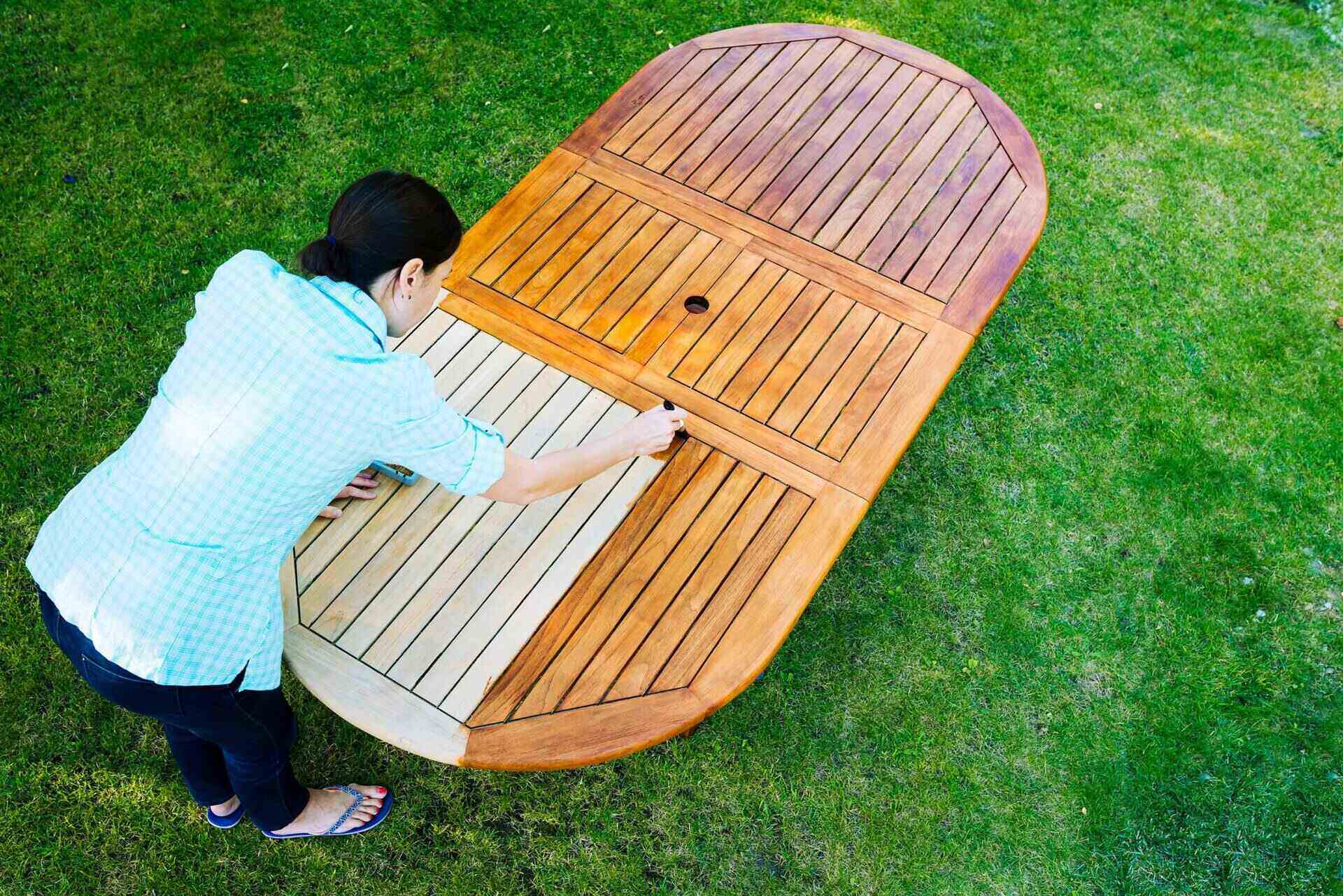


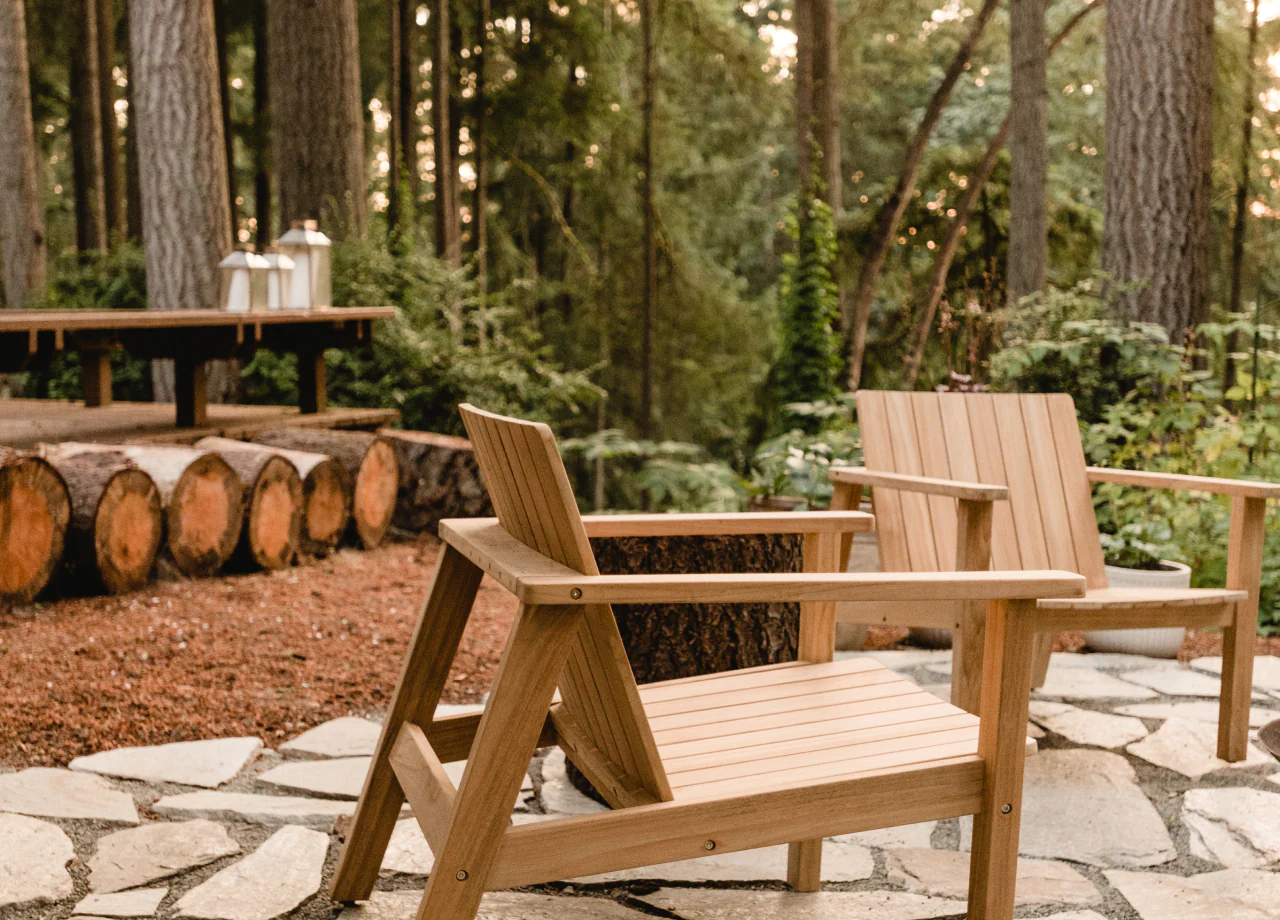



0 thoughts on “How To Identify Wood Furniture”